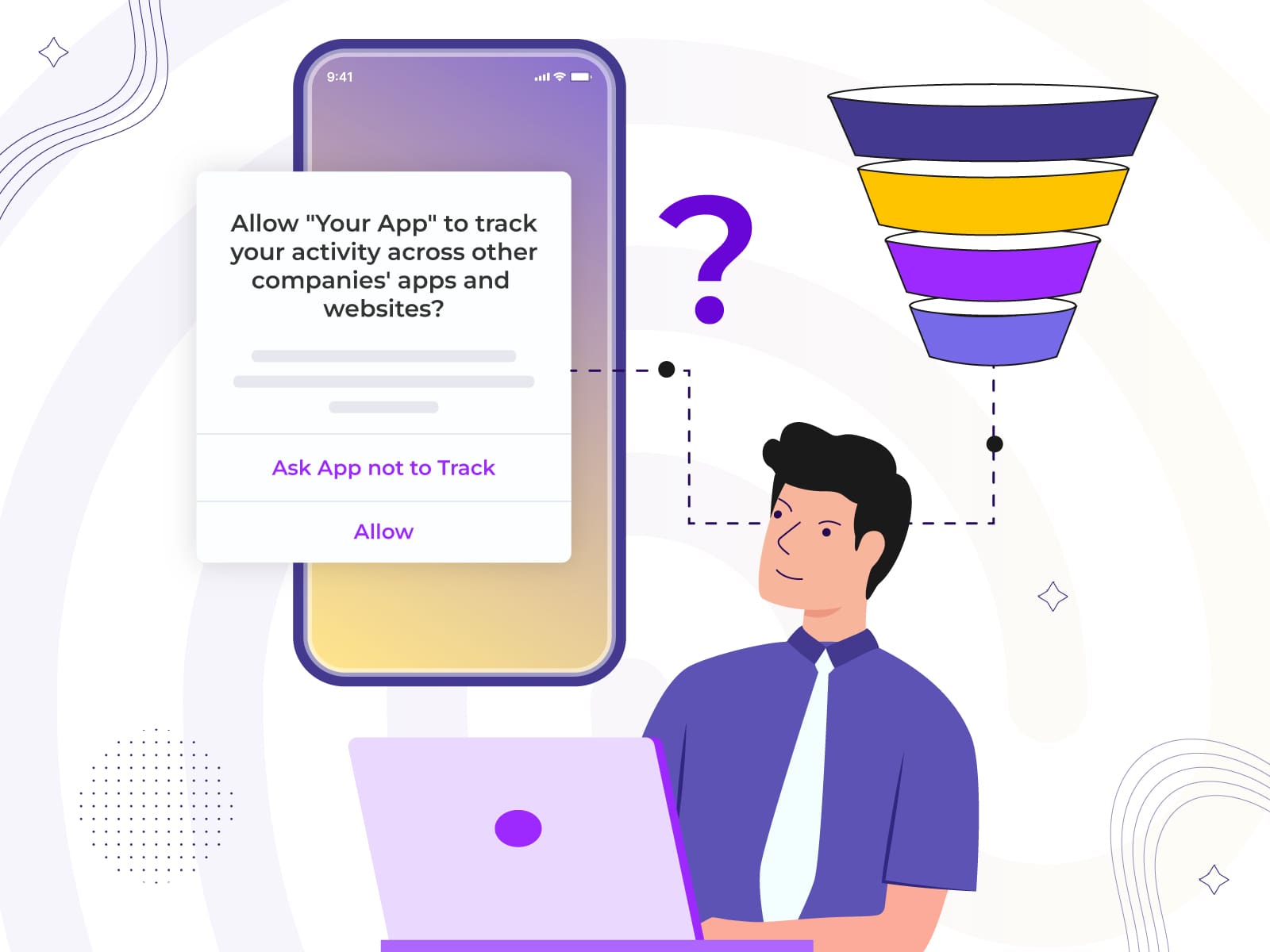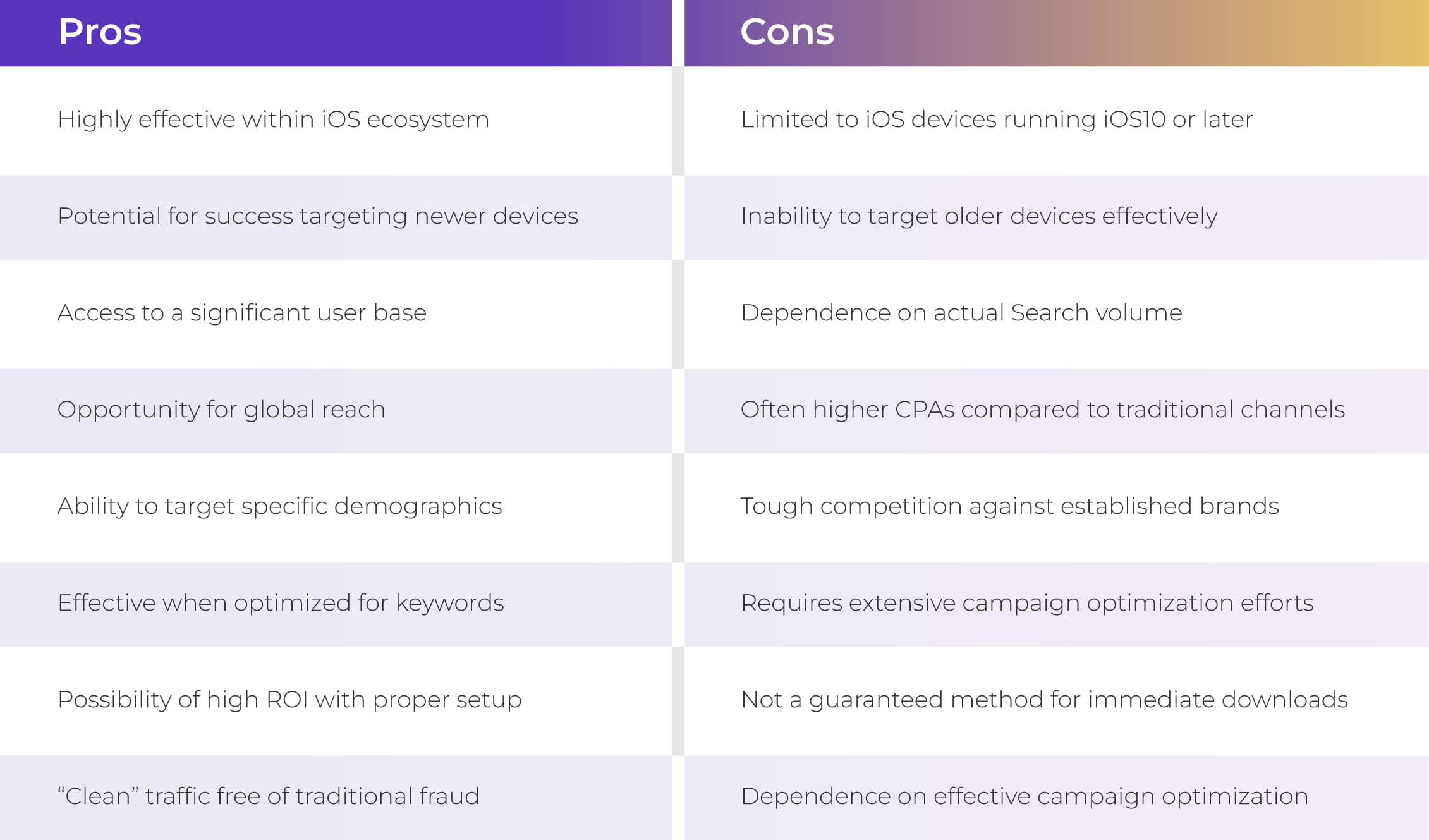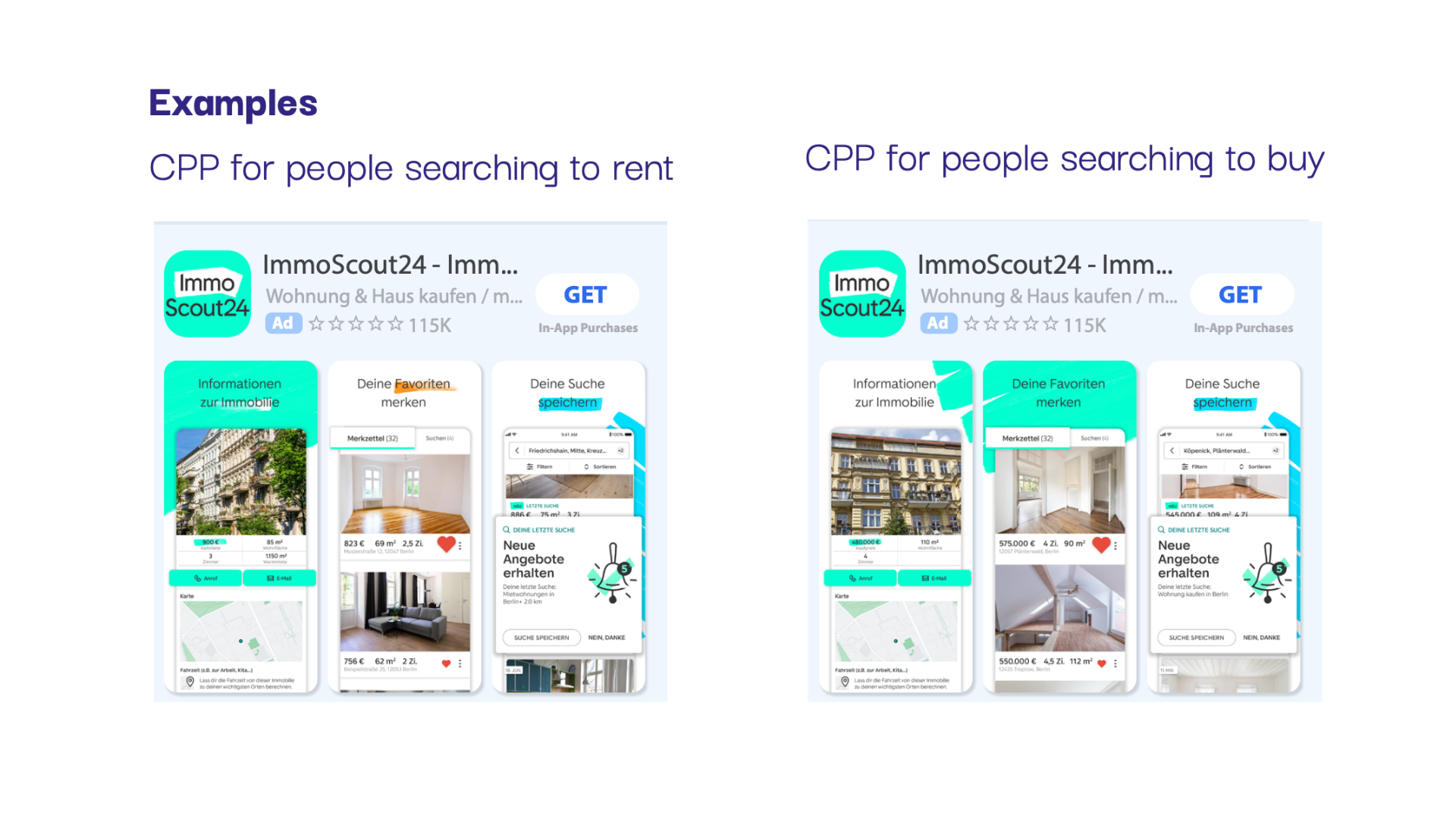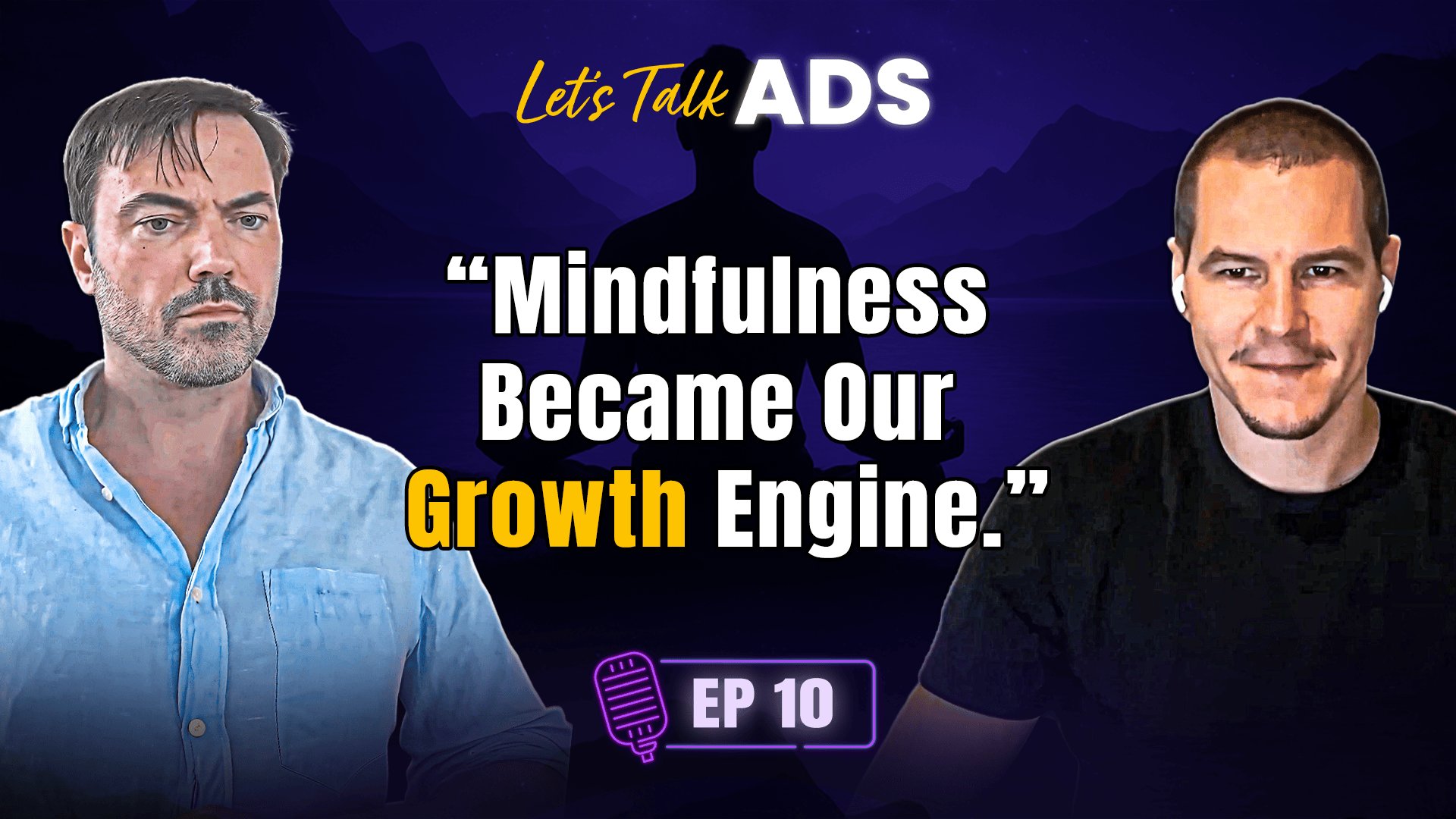Remember the thrill of launching your first iOS app? The feeling you got as you watched it go live on the App Store, ready to reach millions worldwide? Well, hold onto that memory. Because today’s digital world is ever-evolving!
Table of Contents
In this crowded sea of apps looking for attention, each one offers something unique, new, and fun. So how do you stand out from the crowd?
This is where iOS app marketing enters the scene.
From navigating iOS14’s ad tracking changes, harnessing Apple Search Ads, and leveraging custom product pages – we’ve got it all covered! Don’t forget about understanding user reviews and ratings either, they’re a crucial part of this puzzle too!
1. iOS14 + Privacy Updates and Their Impact on Ad Tracking
With the rollout of iOS14, Apple took a bold step towards enhancing user privacy. Let’s break down how these changes are reshaping mobile advertising and how they can affect you.
The Arrival of App Tracking Transparency (ATT)
The key player in all this is ATT (App Tracking Transparency). Introduced with iOS14, it now requires apps to get permission from users before tracking their activity across other companies’ apps or websites. You probably noticed this as soon as you download a new app.
This new policy has raised some eyebrows among marketers but is hailed as a significant win for user privacy.
Tracking refers to the linking of user or device data collected from an app with that gathered from other companies for targeted advertising. It refers to linking either user or device data collected from your app with user or device data gathered from other companies’ apps, websites, or offline properties for targeted advertising purposes. This change doesn’t mean that personalized ads will disappear entirely, but it does significantly affect how they’re served.

Impact on Advertising Efforts
Prior to these updates, iPhone app marketing relied heavily on IDFA (Identifier for Advertisers). However, IDFA is no longer available unless users opt-in via the ATT framework – something few are expected to do willingly. The industry has seen the average opt-in rate for ATT rise to 34% over the past two years. Despite this increase, relying solely on user willingness to opt-in remains a challenge.
I would predict that this could result in a dramatic decline in audience targeting efficiency and measurement capabilities across platforms like Facebook Ads and Google Ads. Typically two channels where app marketers have traditionally found success.
Preparing for the New Normal
The iOS14 privacy updates aren’t all that scary. They represent a shift towards greater transparency, which can build trust with users in the long run. It’s a fantastic time to get creative with your advertising efforts.
To start: it’s important to optimize your ATT prompt to encourage as many users as possible to opt-in. Also, consider diversifying your marketing mix beyond platforms that rely heavily on IDFA. We’re talking about things like ASA (Apple Search Ads), SEO, content marketing or even good old-fashioned email campaigns.
2. The Power and Limitations of Apple Search Ads (ASA)
The App Store of Apple is a densely populated marketplace with numerous apps seeking user interest. In this competitive space, ASA comes into play as one of the most potent app store marketing tools available.
Utilizing ASA for Your App Campaigns
The power of ASA lies in its unique positioning within the App Store. Users typically begin their search for new apps by typing keywords into the App Store’s search bar, and ASA-enabled apps appear at the top of these results – making them highly visible and increasing potential downloads. Think PPC but instead of utilizing the search engine, it’s all in the App Store.
Here’s where things get interesting: Apps that advertise through ASA, appear at the top of these search results. This prime placement can be critical in driving visibility and downloads for your app.
Apple Search Ads offer a huge opportunity to promote your app right when potential users are actively searching. These users are not just scrolling through social media, they’re on a mission to find something specific. Use that to your advantage.
A crucial stat: Conversion rates via search ads could be up to 20% higher than other forms of mobile advertising.
Navigating Through iOS Limitations
Of course, not all tools are perfect, so we have our criticisms. One major limitation of Apple Search Ads is that it only works within the confines of iOS devices’ ecosystem – iPhones or iPads running iOS10 or later versions specifically. Some advertisers have found success targeting older running devices, if this is your demographic you unfortunately are out of luck.
If you’re aiming for global reach, not all countries have access to Apple Search Ads yet, including limitations to advertising in Mainland China which is an untapped market.
An important point that is often overlooked, involves the costs and competition associated with Apple Search Ads compared against traditional advertising channels. Your CPAs could be relatively high (especially if you are new to advertising) and you may find it challenging to compete with established brands with larger budgets.
A word of caution: It’s not just about setting up an ad campaign and waiting for downloads to roll in. The effectiveness of Apple Search Ads largely depends on how well you optimize your campaigns based on relevant keywords, targeted demographics and other crucial parameters. To learn more on how to set up the perfect campaign – check out our Apple Search Ads Ebook!

3. Importance of your Monetization Strategy
As an iOS marketer, you need to understand the ability of subscription models and in-app purchases to create income for your app. But it’s not enough to just have these options available for users – you absolutely need a solid strategy.
Optimizing In-App Purchases
In-app purchases can be the main source of revenue for your app if done right. You want them integrated so seamlessly that users hardly notice they’re spending money until after they’ve already hit ‘confirm purchase’. The key is providing genuine value with each transaction, making sure customers feel like their money was well-spent. No one likes being sold to, so make the experience as native as possible.
To take advantage of this strategy, think about promotional offers. Subscription offers are particularly effective – offering discounts or free trials for limited periods can attract new users who might otherwise hesitate at the paywall. Check out more on the subscription model here.
Beyond subscriptions, there are other ways to generate income through in-app transactions. Additional content packs? Premium features? Think outside the box.
Pricing Models: Subscriptions vs One-Time Purchases
The choice between subscriptions and one-time purchases isn’t always easy but understanding your audience helps make it clearer. “Who” is using your app matters as much as “what” they’re doing with it.
If you’ve built an amazing language learning tool that people will use every day over months or years then yes – recurring payments could work perfectly. But let’s say instead that you’ve created a fun hypercasual game – would those users really appreciate being billed monthly?
4. Significance of User Reviews and Ratings
User reviews and ratings also play a pivotal role in app store marketing. They serve as a scale for your app’s quality, giving potential users an idea about the experiences of others. It’s why Google reviews for restaurants work so well – you’re more likely to dine there if it has good customer feedback.
The Role of Ratings in App Discovery
An app with high ratings naturally attracts more attention than one with low or no ratings at all. But why? High ratings signal trustworthiness and quality – key factors when promoting apps.
You’ve probably browsed through thousands of free apps, looking for something new to download on your iPhone. Two similar apps catch your eye – one has a 4-star rating from hundreds of users while another barely scrapes by with 2 stars from just five people who downloaded it. Which do you choose?
That said, don’t be fooled into thinking higher numbers automatically mean better results. While having lots of positive reviews can boost downloads initially, they must be genuine user experiences rather than purchased ones. Apple takes authenticity seriously.
Leveraging User Feedback for Improvement
User feedback isn’t just about showcasing glowing testimonials or addressing complaints; it also offers valuable insights for improving your iOS app marketing strategy. This can reveal areas where you need improvements such as functionality issues or desired features missing out from current versions. Are users complaining of a glitchy app? Rewards not working? Listen to your users and act fast.
This process doesn’t only make sure we get our products right but builds relationships too – who wouldn’t appreciate developers taking time out to address their concerns? Those users will mostly like leave you a review thanking you and giving you a positive promotion.
Responding to User Reviews
Responding promptly and professionally to user reviews, both positive and negative, can help foster a community around your app. You definitely do not want an entire Reddit thread talking about how scammy, sketchy, or unresponsive you are. Do the right thing and act fast.
Not only do responses show that you value their feedback, but they also demonstrate an active commitment to customer satisfaction. Engaging in a dialogue helps build trust and builds a positive relationship.
5. Leveraging Custom Product Pages for Marketing
Custom product pages are a fantastic tool in your iOS app marketing toolkit. These unique URLs allow you to highlight specific features or content of an app, showcasing the best your app has to offer.
You’re not just confined to one page either. Apple allows you to create additional versions of your App Store product page. This lets you tailor each version’s look and feel, highlighting different aspects of the same app – whether it’s emphasizing the QR code feature on one or showing off stunning product images on another.

Making Your iOS App Stand Out with Unique URLs
Your custom product pages can be more than just static billboards; they’re interactive experiences that drive downloads by engaging potential users directly from social media channels or even smart app banners placed strategically across the web.
The great thing about these unique URLs is that they let people download free apps instantly if they have already got their store set up with payment details, but also work perfectly fine for paid apps.
Boosting Visibility through Smart Design Choices
A compelling design choice like using an eye-catching store badge can draw attention towards certain parts of your mobile app offering which might otherwise go unnoticed amongst countless other icons and thumbnails vying for attention within crowded search results lists.
Add preset messages into shared links directing them back towards customized landing sites where interested visitors may then proceed onto downloading software packages directly from Apple’s own servers via direct link routing systems provided by official Apple developer resources.
Influencing Downloads Through Strategic Page Creation
To make sure every visitor becomes a potential user, craft individualized promotional text targeted at various demographics so everyone feels like this particular mobile application was built especially for them. This can make a huge difference in making your app feel personal and valuable to the potential user.
It’s not just about creating an appealing page; it’s also crucial to drive people towards these pages. One proven method is giving influencers early access. When you get key figures talking about your product, their followers will want to check out what all the buzz is about – leading them right to your custom pages.
Expert Insights – Promoting iOS Apps with Promo Codes
Every creative marketer knows the value of a good promotion. But when it comes to app marketing, promo codes can be your secret weapon. These special codes are not just for getting discounts on digital currency – they’re powerful tools for promoting your app.
Why? Because they let you give press and influencers early access to your apps or in-app purchases. Who better to start buzz than those who hold sway over potential users’ opinions? Think TikTok influencers and Instagram trendsetters!
Maximizing the Impact of Promo Codes
To make sure these promo codes do their job effectively, we need a strategy that maximizes their impact. A well-planned rollout can drive downloads and engagement like nothing else.
A successful strategy starts by making sure you’ve got everything set up correctly in App Store Connect. This is where all promo codes get configured – from setting expiration dates to tracking usage, this platform has everything covered.
The real magic happens when you hand out codes selectively rather than tossing them into the wilds of social media.
- Giving exclusive early access lets select individuals feel special while providing invaluable feedback before a wider release.
- Limited time offers create urgency which encourages quick action – “Use this code now before it’s gone.” Definitely leverage this urgency during holiday events like Black Friday.
- You could even get creative with treasure hunts or contests centered around finding hidden promo codes as well.
Buzz Creation With Influencers & Press:
- Influencer collaborations often lead to content creation. Think of unboxing videos or reviews – featuring your app.
- Press members may provide coverage on their platforms, leading to wider visibility and potential downloads.
However, don’t forget that all promotional activities should comply with the App Store’s Identity Guidelines.
FAQs on iOS App Marketing
How do I market my iOS application?
To effectively market your iOS app, use Apple Search Ads, offer in-app purchases and promote subscription models. You can also leverage custom product pages and promo codes as well.
What is one tip for marketing an iOS app?
A good tip for marketing an iOS app is to get user reviews and ratings. These help boost visibility on the App Store.
Conclusion
Mastering the ins and outs of iOS app marketing can be challenging. However, it’s important to note that even through the difficulties, there are huge opportunities for success and growth. Knowing how to play by Apple’s rules: understanding privacy updates with iOS14+ and ad tracking is your first stop.
Custom product pages and smart use of promo codes are unique ways to gather users inside your app as well. Let’s not forget about user reviews and ratings – they’re not just vanity metrics – they boost visibility and drive buzz around your app!
Success in promoting your app hinges on adaptability, creativity, and a deep understanding of user behavior. Why do it alone? Get in touch with us today to learn more.





